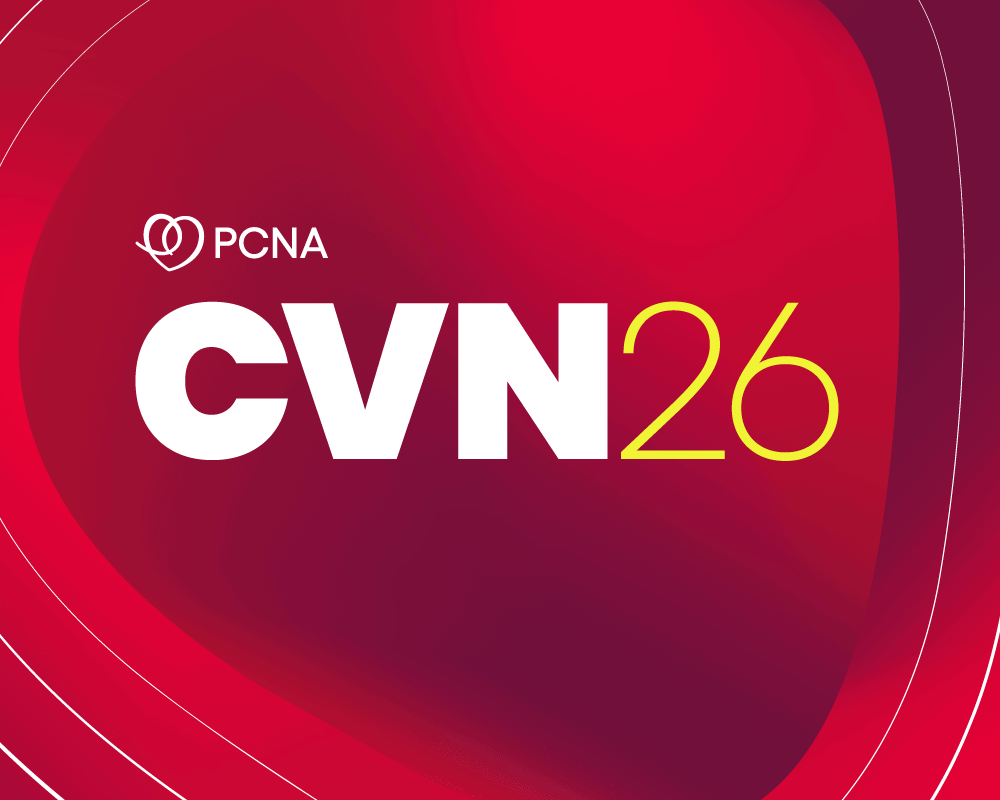Session Objectives
Learn from the research that is redefining cardiovascular health and discover how to put it into practice in your own setting.

Pharmacology Preconference
Heart Failure in 2025: New Therapies, New Recommendations, Next-Gen Nursing
- Identify key updates for the treatment of heart failure
- Explain recent pharmacologic advancements in the management of heart failure with reduced ejection fraction (hfref) and their implications for nursing practice
- Evaluate emerging trends in heart failure management based on recent clinical trial data
- Demonstrate how to apply guideline-directed medical therapy (GDMT) through emerging technologies to optimize outcomes in patients with heart failure
The Silent Threat, Loud Solutions: Nurses Leading the Charge in Hypertension Management
- Discuss current evidence-based hypertension treatment guidelines and their implications for clinical nursing practice
- Explore care considerations for complex or resistant hypertension
- Describe national initiatives aimed at improving hypertension awareness, detection, and control across healthcare settings
- Discuss the role of nurses in implementation and disseminating the hypertension guidelines across diverse settings and populations.
Beyond the Scale: Cardiometabolic Strategies for the Heart of the Matter
- Explain the pathophysiology of excess adiposity, cardiometabolic dysfunction, and cardiovascular risk in patients with and without diabetes
- Explore current and future trends in cardiometabolic pharmacologic management
- Review pharmacologic mechanism of action of guideline-directed therapies, including GLP-1 receptor agonists, SGLT2 inhibitors
- Discuss care models that bridge cardiology, endocrinology, nutrition, and behavioral health to address obesity as a chronic disease
Sleep Tight, Heart Right: Managing Sleep Disorders for Cardiovascular Health
- Explain the pathophysiology and clinical presentation of common sleep disorders, including obstructive sleep apnea (OSA), narcolepsy, restless legs syndrome (RLS), insomnia, and idiopathic fatigue syndrome.
- Describe the relationship between sleep disorders and cardiovascular health, including their role in the development or exacerbation of CVD co-morbidities
- Review current treatment strategies for managing sleep disorders with cardiovascular implications
- Apply nursing care approaches to assess, educate, and manage patients with coexisting cardiovascular and sleep disorders
General Sessions
The Heart of Prevention: Stratifying Risk, Lowering Lipids, and Leading Patient Conversations
- Explain the principles of atherosclerotic cardiovascular disease (ASCVD) risk stratification and the use of evidence-based screening tools
- Describe the impact of traditional and emerging cardiovascular risk enhancers on ASCVD outcomes
- Discuss the pathophysiologic role of lipids, particularly LDL-C and lipoprotein(a), in the development and progression of ASCVD
- Apply effective communication strategies to engage patients in understanding their cardiovascular risk and adopting preventive behaviors
Secondary Prevention: Lipids, Lifestyle, and the Power of Cardiac Rehab
- Identify key secondary prevention strategies following myocardial infarction, revascularization, or diagnosis of ASCVD
- Explain evidence-based lipid management strategies for secondary prevention, including the use of high-intensity statins, ezetimibe, and PCSK9 inhibitors
- Evaluate the role of cardiac rehabilitation in improving long-term cardiovascular outcomes and supporting patient recovery
Valve Vibes: Innovations in Structural Heart Care
- Describe the pathophysiology and clinical presentation of structural heart diseases
- Explain the indications, procedure, and ongoing management for minimally invasive valve therapies
- Apply evidence-based nursing care to optimize outcomes in patients undergoing TriClip, MitraClip, or TAVR procedures
Stroke Smart: Advancing Nursing Leadership in Prevention and Systems of Care
- Describe evidence-based strategies for the prevention and early recognition of stroke, including risk factor management and the use of clinical screening tools
- Discuss current best practices in acute stroke management, including timely intervention, care transitions, and secondary prevention strategies
- Examine the role of nurses in advancing stroke systems of care across the continuum—from pre-hospital response to inpatient care and community reintegration
Atrial Fibrillation Care: Navigating the New Era
- Describe the latest diagnostic approaches for atrial fibrillation, including advances in screening tools and remote monitoring technologies
- Discuss the newest pharmacologic and non-pharmacologic treatment options for atrial fibrillation, including novel anticoagulants, rate control strategies, and catheter ablation techniques
- Examine best practices in the long-term management of atrial fibrillation, with a focus on stroke prevention and lifestyle modifications
Food for Every Heart: Culture, Cost & Cardiovascular Care
- Examine how socioeconomic factors such as food insecurity, access to healthy foods, and health literacy influence dietary choices and cardiovascular outcomes and solutions to address the disparity
- Discuss culturally considerate approaches to cardiovascular nutrition that respect diverse food traditions while promoting heart health
- Explore the role of the CV nurse in policy and advocacy initiatives surrounding nutrition and food as medicine
The Missing Beat: Rewriting the Story of Women’s Heart Health
- Describe sex-specific cardiovascular risk factors and disease patterns in women across key life stages—including adolescence, reproductive years, menopause, and older adulthood
- Explain the principles of cardio-obstetrics and the impact of pregnancy-related conditions on long-term cardiovascular risk
- Apply evidence-based strategies to improve prevention, diagnosis, and management of cardiovascular disease in women, with attention to health disparities and communication gaps
Polluted Hearts: Environmental Health in Cardiovascular Care
- Explain the biological mechanisms through which environmental exposures contribute to cardiovascular disease development and progression
- Examine the impact of environmental exposures on cardiovascular outcomes through a health equity lens
- Describe evidence-based strategies nurses can use to reduce cardiovascular risk associated with environmental exposures
Health Coaching: Role of the Nurse
- Examine health coaching techniques and motivational interviewing into daily cardiovascular care, fostering patient-centered partnerships that drive sustained behavior change
- Explain the use of motivational interviewing strategies to enhance patient engagement and support meaningful lifestyle changes
- Explore the role of nurses as champions of behavior change by cultivating a culture of empowerment, helping patients set personalized cardiovascular health goals, and reinforcing the importance of long-term commitment to health improvement
Breakout Sessions
EKG in Action: Identifying and Interpreting Key Heart Rhythms
- Identify and differentiate the most common heart rhythms through real-time EKG strip analysis (NSR, Atrial, VT, heart blocks)
- Interpret EKG patterns to assess clinical significance and potential patient risk, including recognizing abnormal heart rhythms that require immediate intervention or changes in management (Vtach, VT, ST elevation, etc)
- Analyze an Atrial Fibrillation case study to identify treatment based on EKG findings
Echo in Action: A Hands-On Guide to Echocardiographic Imaging and Interpretation
- Identify and interpret key echocardiographic findings in common disease states such as heart failure, valvular diseases, and myocardial infarction
- Identify the proper technique for obtaining high-quality echo images
- Discuss the application of echo results in clinical decision-making to guide patient care
Cath Lab in Action: Understanding Cardiovascular Interventions
- Demonstrate the ability to interpret angiograms, identifying common pathologies such as coronary artery blockages, stenosis, and other findings in acute coronary syndrome patients
- Understand and apply the principles of percutaneous coronary intervention (PCI)
- Evaluate valvular interventions like TAVR and the decision-making process behind selecting a minimally invasive approach






